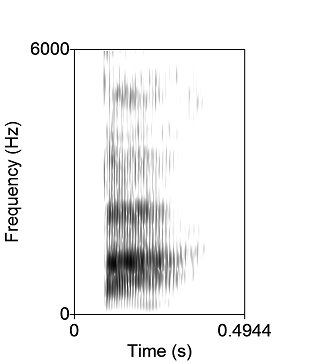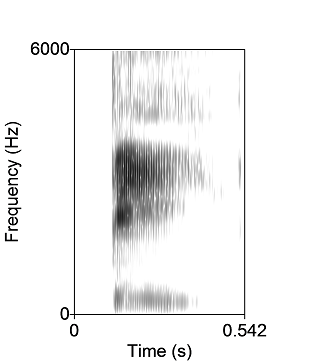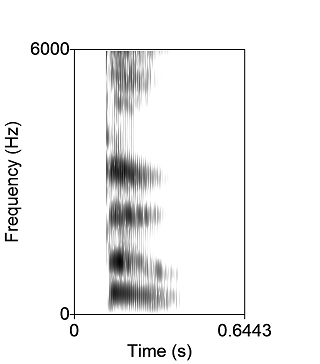Speech perception must take place at very fast rates, as the average speaker can talk at the rate of four words per second. Or to phrase it another way, the average speaker can produce about 15 phonemes per second. To do this as a speaker, our articulators (e.g., the parts of our mouth, vocal tract, etc.) must do things simultaneously to produce this rapid speech. Indeed, when we speak, we also anticipate what sounds are coming next. In this way, we will say the phoneme “b” in the word “bat” in a slightly different way than we say the phoneme “b” in “bet” because a different vowel sound follows the “b.” Think about the position of your mouth when you say “bat” – it is more rounded right at the start than when you say “bet.” Similarly, the “a” sound in “bat” is said slightly different than the “a” sound in “back.” This phenomenon is referred to as coarticulation. We can define coarticulation as the phenomenon in which one phoneme affects the acoustic properties of subsequent phonemes.
What this means is that the consonant and vowel sounds in “ba” overlap in when they are said. It also means that the “a” sound is influencing how the “b” is being said. This is a reciprocal process with the vowel influencing the consonant and the consonant influencing the vowel. We can see this pattern of coarticulation in sound spectrograms of people speaking different consonant-vowel pairs. The physical acoustics of “ba” are different from those of “bə. ” This is illustrated graphically in on the Illustrations/Sounds tab. In the figures you can see that the spectrogram looks different right at the beginning of for the three different sounds, which both start with the letter b. You can also play the sounds. See if you hear a difference.
| 'Bah' | 'Bee' | 'Boo' |
 |
 |
 |
| Play | Play | Play |